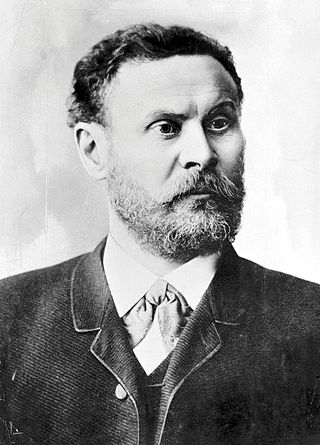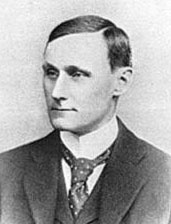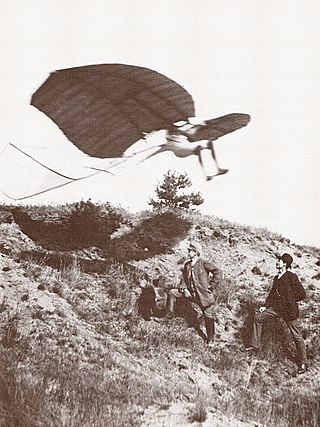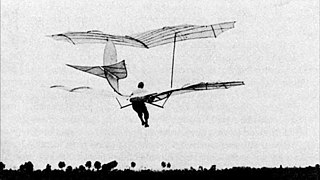
Aeronautics is the science or art involved with the study, design, and manufacturing of air flight–capable machines, and the techniques of operating aircraft and rockets within the atmosphere. The British Royal Aeronautical Society identifies the aspects of "aeronautical Art, Science and Engineering" and "The profession of Aeronautics ."

A biplane is a fixed-wing aircraft with two main wings stacked one above the other. The first powered, controlled aeroplane to fly, the Wright Flyer, used a biplane wing arrangement, as did many aircraft in the early years of aviation. While a biplane wing structure has a structural advantage over a monoplane, it produces more drag than a monoplane wing. Improved structural techniques, better materials and higher speeds made the biplane configuration obsolete for most purposes by the late 1930s.

Aviation includes the activities surrounding mechanical flight and the aircraft industry. Aircraft includes fixed-wing and rotary-wing types, morphable wings, wing-less lifting bodies, as well as lighter-than-air craft such as hot air balloons and airships.

The history of aviation extends for more than two thousand years, from the earliest forms of aviation such as kites and attempts at tower jumping to supersonic and hypersonic flight by powered, heavier-than-air jets.

Karl Wilhelm Otto Lilienthal was a German pioneer of aviation who became known as the "flying man". He was the first person to make well-documented, repeated, successful flights with gliders, therefore making the idea of "heavier than air" a reality. Newspapers and magazines published photographs of Lilienthal gliding, favourably influencing public and scientific opinion about the possibility of flying machines becoming practical.

Percy Sinclair Pilcher was a British inventor and pioneer aviator who was his country's foremost experimenter in unpowered flight near the end of the nineteenth century.

Octave Chanute was a French-American civil engineer and aviation pioneer. He advised and publicized many aviation enthusiasts, including the Wright brothers. At his death, he was hailed as the father of aviation and the initial concepts of the heavier-than-air flying machine.

The Derwitzer Glider was a glider that was developed by Otto Lilienthal, so named because it was tested near Derwitz in Brandenburg. When flown in 1891, it became a very early successful design able to carry a person and the one of the first successful manned aircraft in the world. He made flights of up to 25 metres in it.

An airplane, or aeroplane, informally plane, is a fixed-wing aircraft that is propelled forward by thrust from a jet engine, propeller, or rocket engine. Airplanes come in a variety of sizes, shapes, and wing configurations. The broad spectrum of uses for airplanes includes recreation, transportation of goods and people, military, and research. Worldwide, commercial aviation transports more than four billion passengers annually on airliners and transports more than 200 billion tonne-kilometers of cargo annually, which is less than 1% of the world's cargo movement. Most airplanes are flown by a pilot on board the aircraft, but some are designed to be remotely or computer-controlled such as drones.

The Wright Model A was an early aircraft produced by the Wright Brothers in the United States beginning in 1906. It was a development of their Flyer III airplane of 1905. The Wrights built about seven Model As in their bicycle shop during the period 1906–1907, in which they did no flying. One of these was shipped to Le Havre in 1907 in order to demonstrate it to the French. The Model A had a 35-horsepower (26 kW) engine and seating for two with a new control arrangement. Otherwise, it was identical to the 1905 airplane. The Model A was the first aircraft that they offered for sale, and the first aircraft design to enter serial production anywhere in the world. Apart from the seven machines the Wrights built themselves in 1906–1907, they sold licences for production in Europe with the largest number of Model A's actually being produced in Germany by Flugmaschine Wright GmbH, which built about 60 examples.

Hang gliding is an air sport employing a foot-launchable aircraft known as a hang glider. Typically, a modern hang glider is constructed of an aluminium alloy or composite-framed fabric wing. The pilot is ensconced in a harness suspended from the airframe, and exercises control by shifting body weight in opposition to a control frame.

The Wright brothers designed, built and flew a series of three manned gliders in 1900–1902 as they worked towards achieving powered flight. They also made preliminary tests with a kite in 1899. In 1911 Orville conducted tests with a much more sophisticated glider. Neither the kite nor any of the gliders were preserved, but replicas of all have been built.

Louis Ferdinand Ferber was a French Army officer who played an important role in the development of aviation during the early 1900s. Although his aircraft experiments were belatedly successful, his early recognition and publicizing of the work of the Wright Brothers was a major influence on the development of aviation in Europe.

The Otto Lilienthal Museum in Anklam (Germany) is a museum dedicated to the "glider king" Otto Lilienthal, the flight pioneer, as well as a pioneer in technical, social and cultural projects. Lilienthal made over 2,000 flights in gliders of his design starting in 1891 with his first glider version, the Derwitzer, until his death in a gliding crash in 1896. His total flying time was five hours.

Augustus Moore Herring was an American aviation pioneer, who sometimes is claimed by Michigan promoters to be the first true aviator of a motorized heavier-than-air aircraft.

Dart Aircraft Limited was a British aircraft manufacturer during the 1930s. Its facilities were located at 29 High Street North, Dunstable, Bedfordshire.

The Daimler L20, later known as the Klemm-Daimler L20, was one of the first light aircraft to be built in significant numbers. A two-seater with an engine of only 20 hp (15 kW), it demonstrated the ability of a small aircraft to cope with flights over the Alps in winter and to make transcontinental journeys of over 36,000 km.

The Raab-Katzenstein RK.9 Grasmücke (Hedge-sparrow) was a 1920s German two-seat touring, advertising and training biplane. It was one of many designs from several countries aiming to provide low cost flying and was quite successful, with about twenty built.

The Horten H.I was a German flying wing research glider built by Walter and Reimar Horten in 1933.

Otto Lilienthal's Large Biplane glider was designed and built in 1895 as an advanced stage of the Lilienthal Normalsegelapparat – a monoplane glider invented by Otto Lilienthal. The Normalsegelapparat, patented in 1893, was the first production aircraft in history. Like its preceding model, the Large Biplane is a hang glider which is controlled through weight-shift by the pilot, as hang gliders are to this day.






















